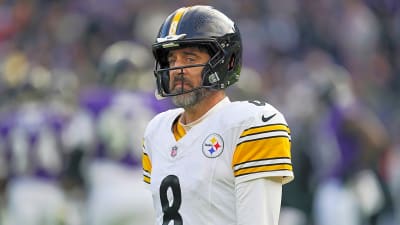
Dallas Cowboys running back Javonte Williams shares a similarity with Indianapolis Colts quarterback Daniel Jones: both were kicked to the curb by teams who pursued other options at their positions. Now, Williams and Jones are thriving with their new teams, while their former organizations continue to struggle with the same issues they believed had been solved by letting Williams and Jones go.
The Athletic’s Robert Mays first highlighted this commonality, but it’s a storyline that deserves a deeper dive. Daniel Jones’ performance with the Colts this season has been highly documented, as well as Russell Wilson’s failures with the Giants. Williams, on the other hand, hasn’t seen that same spotlight, making it worth diving into what he’s doing and how it’s proving the Broncos wrong.
Before diving into the present, it's important to first understand how Williams and Denver arrived at this point.
Williams was drafted in the second round in the 2021 NFL Draft as the eventual successor to Melvin Gordon. He had a productive year splitting carries with Gordon, with both rushing for over 900 yards that season. Williams fought some of the issues that come with rookie running backs, sometimes struggling to find the hole and tempo his runs properly, but overall, Williams looked like the Broncos’ running back of the future.
This run from Javonte Williams was just mean #BroncosCountry
— PFSN (@PFSN365) December 20, 2021
pic.twitter.com/th7jR1vgNN
In his second season, however, disaster struck. Williams tore his ACL, LCL, and posterior lateral corner, a series of significant injuries that many thought he might not come back from.
Williams returned in 2023, but lacked the same contact balance and explosiveness he had as a rookie. His yards per attempt dropped from 4.4 in his rookie season to 3.6 in 2023, making it seem like Williams was destined to be yet another “what if” story at the position.
2024 brought more of the same, with the worst rushing grade of any back on his team, according to PFF. However, this wasn’t just a Williams problem, as the team’s overall rushing grade was the fifth-worst in the league. This led to questions regarding who the real problem was in the situation.
These questions gained further significance when seeing what Williams did on the field. When the holes were there, he was effective, showing the quickness and tackle-breaking ability that made him such an exciting player as a rookie.
Javonte Williams reads the flow and gets north on this Broncos zone run https://t.co/zgT7jpRCVh pic.twitter.com/RmjnNsyOYf
— Nate Tice (@Nate_Tice) November 18, 2024
Denver still decided to explore other options at the position this offseason, opting not to offer Williams a new contract despite his expressing a desire to return to the team.
The Cowboys signed him to a one-year, $3 million deal instead. This decision faced widespread criticism, citing the Cowboys’ ineffective run game in 2024, which was largely blamed on having one of the league’s least talented running back rooms—one that Williams wasn’t expected to improve. Dallas also signed Miles Sanders and drafted Jaydon Blue in the fifth round, the latter of whom was the Cowboys’ back that fans were actually excited to see.
Blue got all of the talk this offseason, mainly emphasizing his explosive ability with the ball in his hands that fans found so appealing. However, through three weeks, Blue hasn’t played a single snap, and Sanders has only taken 18 attempts compared to Williams’ 43. It's not what most expected coming into the year, but plays like the one below clearly show why the majority of the snaps have gone Williams' way.
Javonte Williams goes 30 yards... touchdown!
— NFL (@NFL) September 14, 2025
NYGvsDAL on FOX/FOX Onehttps://t.co/HkKw7uXVnt pic.twitter.com/KSwB0wDIjm
Over three weeks, Dallas has PFF's sixth-best rushing grade in the league. Williams has the seventh-most rushing yards at 5.3 yards per carry, the latter of which is the best mark of his career. Per Mays' original tweet, the Cowboys have the league's best rushing success rate, with Williams leading the way.
Conversely, the Broncos rank 30th in rushing success rate, per Next Gen Stats. Their down-to-down efficiency issues have continued from last year, even after drafting rookie running back R.J. Harvey and signing J.K. Dobbins.
The play below is a perfect example of why that’s the case. Dobbins’ run is dead on arrival, with three defenders running free into the backfield as soon as he gets the ball.
J.K. Dobbins #BroncosCountry
— Matt Waldman (@MattWaldman) September 22, 2025
Forget the lemonade stand. A dumpster fire fell out of the sky and landed on the stand. Dobbins still manages to pull a lemon from the flaming mess.
Impressive. pic.twitter.com/us5ZgAgcNO
It doesn’t matter if the running back is Barry Sanders on a play like this—there’s simply no way to gain positive yards when a defender is closing in the moment you get the football, followed by two more after you somehow evade the first.
Ironically, Williams' excellent season is supported by what seems to be ailing Denver’s—its design. The Cowboys' run game is structured by one of the best in the league, new offensive coordinator Klayton Adams. Adams spent the previous two seasons as the Cardinals’ offensive line coach and run game coordinator, helping design one of the best run games in the league over that stretch. The collaboration between Adams, the Cowboys’ top-notch offensive line and Williams has made Dallas one of the best rushing offenses in the league again.
This brings us back to Mays’ original point. Denver let Williams walk because they believed signing or drafting a back with “more talent” would give them the run game they’ve lacked for years. Now, they’re 1-2 with one of the least efficient run games in the league, while Williams is in Dallas, leading the most efficient one.
More must-reads:
- Packers' Micah Parsons suffers non-contact injury vs. Broncos
- Historic performance from Trevor Lawrence leads Jaguars to fifth straight win
- The 'Oldest 4,000-passing-yard seasons' quiz
Breaking News
Trending News
Customize Your Newsletter
 +
+
Get the latest news and rumors, customized to your favorite sports and teams. Emailed daily. Always free!








